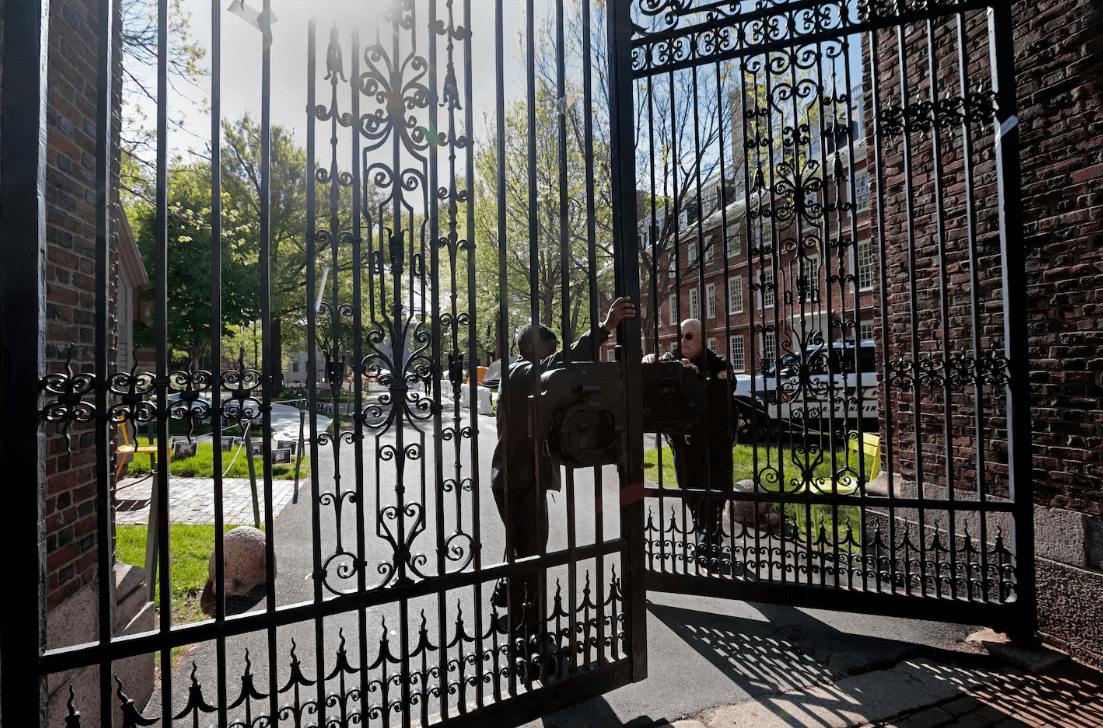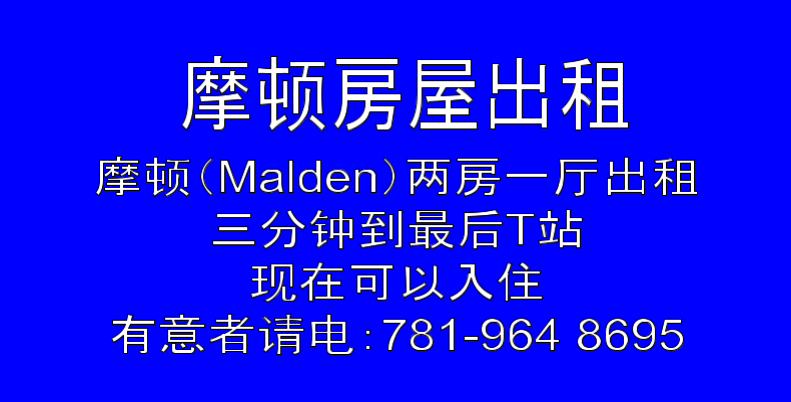平权行动禁令后,哈佛大学招收的黑人新生减少

【中美创新时报2024 年 9 月 11 日编译讯】(记者温友平编译)哈佛大学是最新一所报告今年秋季黑人新生入学率下降的精英大学,一年前,它输掉了美国最高法院的一场关键案件,导致全国范围内禁止在大学招生中采取种族歧视的平权行动。《波士顿环球报》记者希拉里·伯恩斯(Hilary Burns)对此作了下述报道。
哈佛大学是最新一所报告今年秋季黑人新生入学率下降的精英大学,一年前,它输掉了美国最高法院的一场关键案件,导致全国范围内禁止在大学招生中采取种族歧视的平权行动。
哈佛大学周三表示,黑人学生占一年级学生的 14%,低于去年的 18%。
阿默斯特学院、麻省理工学院、塔夫茨大学和布朗大学也报告称,今年招收的黑人新生比例与去年相比有所下降。
然而,现在就得出结论,最高法院禁止种族歧视的招生政策对顶尖高等教育机构的多样性有多大影响可能还为时过早。新泽西州普林斯顿大学和康涅狄格州耶鲁大学的黑人学生入学率基本保持稳定,这让平权行动的支持者和批评者都感到困惑。许多学校尚未公布新生的人口统计数据。

“现在情况很混乱,”塔夫茨大学社会学教授娜塔莎·瓦里库 (Natasha Warikoo) 表示,她曾撰写过有关大学录取中平权行动的书籍。瓦里库表示,到目前为止,她最担心的是几所学校黑人学生的入学率下降。
“这令人不安,”瓦里库说。“20 世纪 60 年代初平权行动的起源实际上是为非裔美国人创造空间和机会,特别是因为他们过去被排除在精英高等教育之外。这就是起源,也是目前受影响最大的人,所以对我来说,这非常令人不安。”
普林斯顿大学和耶鲁大学的发言人没有立即回应采访请求。
哈佛大学表示,37% 的新生是亚裔美国人,与去年相同。西班牙裔或拉丁裔新生的比例增长了两个百分点,达到 16%,而美洲原住民学生的比例从一年前的 2% 下降到 1%。不到 1% 的哈佛新生自称是夏威夷原住民或其他太平洋岛民,与去年相比没有变化。
哈佛大学表示,今年 2028 届毕业生中有 8% 的人没有透露种族或民族,而去年这一比例为 4%。
普林斯顿大学研究高等教育的经济学家 Zachary Bleemer 表示,加州在 1996 年禁止平权行动后,学校也经历了类似的趋势。Bleemer 发现,选择隐瞒种族和民族信息的“几乎全部”是白人和亚裔学生。
哈佛大学发言人不愿透露 2028 届白人学生的比例,并拒绝让官员接受采访。根据哈佛大学的数据,去年秋季,哈佛学院约有 32% 的学生自认为是白人。
“当我们将来自不同背景、经历和信仰的学生聚集在一起时,我们的社区是最强大的,”招生和财政援助主任 William R. Fitzsimmons 在一份声明中表示。“当拥有不同观点的人聚集在一起时——无论是在课堂内还是课堂外——通过他人的视角来看待共同的挑战,我们的社区就会变得出色。”
北卡罗来纳大学教堂山分校的种族意识招生政策去年也被最高法院驳回,该校最近报告称,其一年级新生中黑人学生的比例也从一年前的 10.5% 下降到 7.8%。北卡罗来纳大学的亚裔或亚裔美国学生比例略有增加,而西班牙裔学生入学率略有下降。白人入学率保持不变。
“现在仅凭一年的数据来判断趋势还为时过早,”招生副教务长 Rachelle Feldman 在一份新闻稿中表示。 “我们致力于遵守新法律。我们还致力于确保我们这个不断发展的州内所有 100 个县的学生都乐于申请,对我们的学费负担能力充满信心,并知道这是一个他们感到受欢迎并能取得成功的地方。”
去年 6 月,法院在一宗针对哈佛大学和北卡罗来纳大学教堂山分校的案件中裁定,学校在评估学生的入学申请时不得考虑其种族,从而有效地结束了基于种族的平权行动。专家们担心,根据全州禁令生效后,一些高度选择性的学校所发生的事情,此举可能会损害全国各地精英大学校园的多样性。
公平录取学生组织领导人爱德华·布鲁姆 (Edward Blum) 起诉了哈佛大学和教堂山分校,他在给《波士顿环球报》的一封电子邮件中写道,“其中一些 [不同的] 结果令人困惑,因为这些大学在 2022 年向最高法院提交的联合法庭之友陈述中写道,如果不实施最高法院禁止的种族歧视类型,就不可能保持新生班级的种族构成。”
法院的裁决并没有结束整体录取政策,顶尖大学会考虑学术以外的一系列因素,包括申请人的生活经历和克服的挑战。
为了减轻平权行动禁令的预期影响,全国各地的竞争性学校加大了对低收入高中的宣传力度;与为低收入、农村和第一代学生服务的非营利组织合作;并增加了论文题目,让准学生有机会分享他们的生活背景。
哈佛大学表示,20% 的新生是他们家庭中第一个上大学的人,这与近年来的情况一致。
一些高等教育观察家质疑,自新冠疫情结束以来恢复标准化考试的学校是否更有可能看到更少的有色人种学生入学。
“如果更多的机构恢复考试,我们可能会看到更少的有色人种学生被录取,”全国大学招生咨询协会首席执行官安吉尔·佩雷斯说。“我对此感到担忧,我希望这能给高等教育敲响警钟:我们真的想给边缘化学生增加另一层复杂性吗?”
麻省理工学院的官员上个月表示,该校一年级新生中有色人种学生的比例下降了 9 个百分点,他们否认测试会破坏多样性的说法。
“去年,我们根据测试要求录取的班级中,来自历史上代表性不足的种族和民族背景的学生比例是麻省理工学院历史上最高的,因为普遍测试帮助我们识别出客观上合格的学生,而这些学生缺乏其他途径来证明自己的准备程度,”麻省理工学院招生和学生财务服务主任 Stu Schmill 在大学网站上发布的一次采访中说道。“正如我当时所解释的那样,标准化测试当然不完美,但在重要方面,它们比我们能想到的其他事情更不不平等。”
加州大学洛杉矶分校法学教授理查德·桑德一直批评平权行动,他在一次采访中表示,几所顶尖学校黑人学生人数的下降凸显了“一个非常严重的学术差距问题”。
“我们应该说,黑人入学率下降凸显了 K-12 系统的失败,”桑德说。“此刻,我们应该将注意力重新集中在如何改善少数族裔待遇上。”
高等教育观察家表示,未被美国最挑剔的学校录取的黑人学生可能会被其他学校录取,这可能会产生“连锁效应”。例如,加州大学圣地亚哥分校在没有采取平权行动的情况下,就招收了未被加州大学洛杉矶分校等更具竞争力的学校录取的黑人和西班牙裔学生,布利默说。布利默说,在平权行动禁令颁布后,最挑剔的学校通常会出现黑人和西班牙裔入学率下降幅度最大的情况。
“当一所大学失去学生时,其他大学必须获得这些学生,”布利默说。
题图:哈佛大学。Pat Greenhouse/Globe Staff
附原英文报道:
Harvard enrolls fewer Black freshmen after affirmative action ban
By Hilary Burns Globe Staff,Updated September 11, 2024
Harvard University.Pat Greenhouse/Globe Staff
Harvard University is the latest elite university to report a decline in enrollment for Black first-year students this fall, a year after it lost a pivotal US Supreme Court case that resulted in a nationwide ban on race-conscious affirmative action in college admissions.
Black students make up 14 percent of first-year students, Harvard said Wednesday, down from 18 percent last year.
Amherst College, the Massachusetts Institute of Technology, Tufts University, and Brown University have also reported enrolling a smaller percentage of Black freshmen this year compared to last year.
It may be early, however, to draw conclusions about the extent to which the Supreme Court’s ban on race-conscious admissions policies is affecting diversity at top higher education institutions. Black student enrollment held mostly steady at Princeton University, in New Jersey, and Yale University, in Connecticut, perplexing both advocates and critics of affirmative action. Many schools have not yet released demographic data of their incoming classes.
“It’s all over the place right now,” said Natasha Warikoo, a professor of sociology at Tufts University, who has written books about affirmative action in college admissions. Warikoo said she is most concerned so far about the percentage of Black students dropping at several schools.
“That is troubling,” Warikoo said. “The origin of affirmative action back in the early 1960s was really about making space and opportunity for African Americans, in particular, because they were excluded from elite higher education in the past. That is the origin, and that’s who is being affected the most right now, so that, to me, is very troubling.”
Princeton and Yale spokespeople did not immediately respond to interview requests.
Harvard said 37 percent of incoming students are Asian American, the same as last year. The share of Hispanic or Latino first-year students grew two percentage points, to 16 percent, while the share of Native American students fell from 2 percent a year ago to 1 percent. Fewer than 1 percent of incoming Harvard students identified as Native Hawaiian or other Pacific Islander, reflecting no change from last year.
Harvard said 8 percent of students in the graduating class of 2028 did not disclose race or ethnicity this year, compared to 4 percent last year.
Zachary Bleemer, a Princeton University economist who studies higher education, said schools in California experienced a similar trend after the state’s 1996 ban on affirmative action. Bleemer found it was “almost exclusively” white and Asian students who opted to withhold information about their race and ethnicity.
A Harvard spokesperson would not disclose the percentage of white students in the class of 2028 and declined to make an official available for an interview. About 32 percent of students at Harvard College identified as white last fall, according to university numbers.
“Our community is strongest when we bring together students from different backgrounds, experiences, and beliefs,” William R. Fitzsimmons, dean of admissions and financial aid, said in a statement. “And our community excels when those with varied perspectives come together – inside and outside of the classroom – around a common challenge by seeing it through another’s perspective.”
The University of North Carolina at Chapel Hill, whose race-conscious admissions policy the Supreme Court also rejected last year, recently reported the share of Black students in its first-year cohort also declined, to 7.8 percent, from 10.5 percent a year ago. The percentage of Asian or Asian American students at UNC grew slightly while Hispanic enrollment fell slightly. White enrollment stayed about the same.
“It’s too soon to see trends, with just one year of data,” Rachelle Feldman, vice provost for enrollment, said in a press release. “We are committed to following the new law. We are also committed to making sure students in all 100 counties from every population in our growing state feel encouraged to apply, have confidence in our affordability and know this is a place they feel welcome and can succeed.”
The court last June, in a case against Harvard and UNC Chapel Hill, ruled that schools were barred from taking into account a prospective student’s race when evaluating their application for admission, effectively ending race-based affirmative action. Experts had raised fears that the move could be detrimental to diversity on elite college campuses across the country, based on what happened at highly selective schools after statewide bans took effect.
Students for Fair Admissions leader Edward Blum, who brought the case against Harvard and Chapel Hill, wrote in an email to the Boston Globe that some “of these [varying] results are bewildering, since these colleges in their 2022 joint amicus brief to the Supreme Court wrote that maintaining the racial composition of their incoming class would not be possible without implementing the type of racial discrimination that was barred by the Supreme Court.”
The court’s ruling did not end holistic admissions policies, in which top colleges consider a range of factors beyond academics including applicants’ life experiences and challenges overcome.
To mitigate the anticipated effects of an affirmative action ban, competitive schools around the country increased outreach efforts to low-income high schools; partnered with nonprofits working with low-income, rural, and first-generation students; and added essay questions to give prospective students an opportunity to share context about their lives.
Harvard said 20 percent of its first-year students are the first in their family to attend college, in line with recent years.
Some higher education watchers question whether schools that have reinstituted standardized exams since the COVID-19 pandemic ended are more likely to see fewer students of color enroll.
“If more institutions are going back to testing, we will probably see fewer students of color being admitted,” said Angel Pérez, chief executive of the National Association for College Admission Counseling. “I’m concerned about that, and I hope it’s a wakeup call to higher education: Do we really want to add another layer of complexity for marginalized students?”
Officials at MIT, which last month said the share of students of color in its first-year cohort declined 9 percentage points, rejected the notion that testing undermines diversity.
“[T]he class we admitted last year under the testing requirement had the highest proportion of students from historically underrepresented racial and ethnic backgrounds in MIT history, because universal testing helped us identify objectively well-qualified students who lacked other avenues to demonstrate their preparation,” said Stu Schmill, the university’s dean of admissions and student financial services, in an interview posted on the university’s website. “As I explained at the time, standardized tests are certainly imperfect, but they are, in important respects, less unequal than other things we can consider.”
Richard Sander, a law professor at the University of California, Los Angeles, who has been critical of affirmative action, said in an interview that the declines of Black students at several top schools underscores “a really serious academic gap problem.”
“What we ought to be doing is saying drops in Black enrollment highlight failures of the K-12 system,” Sander said. “This moment ought to refocus our attention on how to improve minority treatment.”
Higher education watchers said there is likely to be a “cascading effect” of Black students who were not accepted to the country’s most selective schools enrolling at other institutions. UC San Diego, for example, gained Black and Hispanic students who were not accepted to more competitive schools like UCLA without affirmative action, Bleemer said. The most selective schools typically see the largest declines in Black and Hispanic enrollment after bans on affirmative action, Bleemer said.
“When one college loses, someone else has to gain those students,” Bleemer said.

